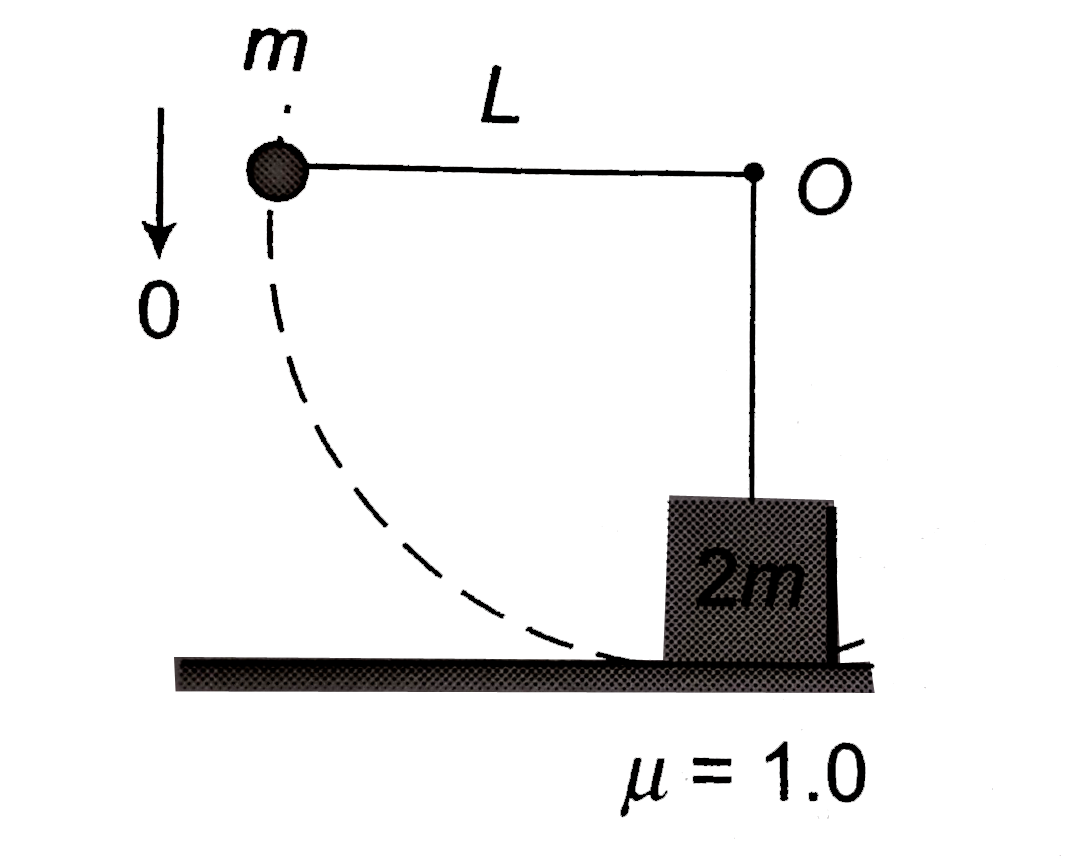Small identical balls with equal charge are fixed at the vertices of a reggular hexagon after of N sides ,each of length a At a certain instant one of the ball is releases and after a sufficiently long time the adjacent ball is released .The kinetic energies of the two releases balls differ by k at a sufficenlty long distance from the polygon . Determine the charge on each ball.
The correct Answer is:√4πε0ak
Topper's Solved these Questions
- BOOK - NN GHOSHCHAPTER - GAUSS THEOREM AND ITS APPLICATIONEXERCISE - EXAMPLES(a)24videos
GAUSS THEOREM AND ITS APPLICATION
- BOOK - NN GHOSHCHAPTER - GALVANOMETERS: AMMETER AND VOLTMETERSEXERCISE - Exercise32videos
GALVANOMETERS: AMMETER AND VOLTMETERS
- BOOK - NN GHOSHCHAPTER - HEATING AND CHEMICAL EFFECT OF CURRENTEXERCISE - EXAMPLE B23videos
HEATING AND CHEMICAL EFFECT OF CURRENT
Similar Questions
Small identical balls with equal charges are fixed at the vertices of a regular polygon of N sides, each of length d. At a certain instant, one of the ball is released. After long time interval, the adjacent ball to the previous one is released. The difference in kinetic energies of the two released balls is K at a sufficiently long distance from the polygon.
View SolutionSmall identical balls with equal charges are fixed at vertices of regular 2009 -gon with side a. At a certain instant, one of the balls is released & a sufficiently long time interval later, the ball adjacent to the first released ball is freed. The kinetic energies of the relased balls are found to differ by K at a sufficiently long distance from the polygon. Determine the charge q of each part.
View Solution
Knowledge Check
- Question 1 - Select One or More
Small identical balls with equal charges are fixed at the vertices of a regular polygon of N sides, each of length d. At a certain instant, one of the ball is released. After long time interval, the adjacent ball to the previous one is released. The difference in kinetic energies of the two released balls is K at a sufficiently long distance from the polygon.
AFinal kinetic energy of the first ball is greater than that of the second ballBFinal kinetic energy of the second ball is greater than that of the first ballCCharge on each ball is √2πε0dKDCharge on each ball is √4πε0dK - Question 2 - Select One
The ball is released when the string is horizontal. The collision between the ball and the block is head - on elastic. The velocities of the ball and the block immediately after collision
 A23√2gL,13√2gLB−23√2gL,13√2gLC23√2gL,−13√2gLD−23√2gL,−13√2gL
A23√2gL,13√2gLB−23√2gL,13√2gLC23√2gL,−13√2gLD−23√2gL,−13√2gL - Question 3 - Select One
A ball A is thrown up vertically with a speed u and at the same instant another ball B is released from a height h. At time t, the speed A relative to B is
AuB2uCu−gtD√u2−gt
Small identical balls with equal charges of magnitude 'q' each are fixed at the vertices of a regular 20019-gon (a polygon of 2019 sides) with side 'a'=4. At a certain instant, one of the balls is released and a sufficiently long time interval later, the ball adjacent to the first released ball is freed. The kinetic energies of the released balls are found to differ by K=9×109J at a sufficiently large distance from the polygon. determine the charge q in mC.
View SolutionSmall identical balls with equal charges of magnitude 'q' each are fixed at the vertices of a segular 20019-gon (a polygon of 2019 sides) with side 'a'=4μm. At a certain instant, one of the balls is released and a sufficiently long time interval later, the ball adjacent to the first released ball is freed. The kinetic energies of the released balls are found to differ by K=9×109J at a sufficiently large distance from the polygon. determine the charge q in mC.
View SolutionTwo identical metallic balls with equal charges are kept 4.5 cm apart. The force between both the balls increases by 10% on giving extra charge of 0.001 μC to one of the ball. Calculate the charge on each ball.
View SolutionTwo balls of radius r each are placed at a distance R and released . The speed of each ball when they collide
 View Solution
View SolutionA ball A is thrown up vertically with a speed u and at the same instant another ball B is released from a height h. At time t, the speed A relative to B is
View Solution

